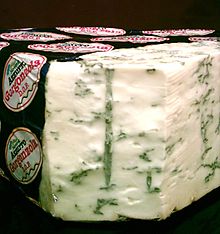Noble mold

As noble mold individual to mold designated species, which do not make a human food inedible, but enhance.
Of the 130,000 species of fungi, only a few can be used for dairy farming and are therefore suitable for the production of cheese as ripening organisms. These types of mushrooms used in the dairy industry differ from harmful cultures in that they only give the cheese its specific aromas, but are harmless to the human organism. They are therefore classed as noble mushrooms and are classified as particularly valuable. In order to promote the formation of mold, certain cheeses during the ripening process with wide needles pricked , can thus penetrate through the resulting needle channels oxygen into the cheese so razor, which encourages mold growth and accelerated.
In the production of mold cheese , cultures of molds are used, for example for the blue cheese variety Roquefort the Penicillium roqueforti and for camembert and brie the Penicillium camemberti or the Penicillium candidum .
Furthermore, fungal cultures play in the wine preparation involved, see noble rot .
Noble mold cultures are also used in sausage production, so there are even two different types of mold for Hungarian salami : First a blue-green mold, which is replaced by a white mold as the sausage matures. This gives the salami skin its characteristic whitish color.
In the culatello -Fabrication a noble mold for the taste of the ham makes.
Mold cultures such as Aspergillus oryzae are also used in the production of soy sauce .